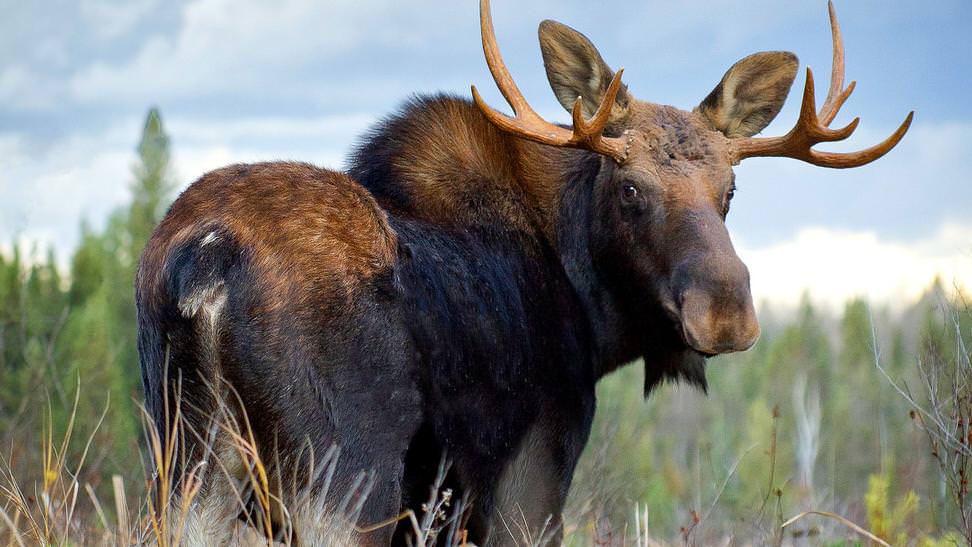Key Takeaways:
- Teaching kids about sustainable travel from a young age can help instill lifelong habits of eco-friendly practices.
- Choose accommodations that prioritize sustainable practices, such as using renewable energy sources or implementing recycling programs.
- Encourage kids to be mindful of their consumption while traveling, such as using reusable water bottles and avoiding single-use plastics.
- Engage in activities that support the local community and economy, such as visiting local markets or participating in cultural experiences.
- Educate children about the importance of preserving natural environments by participating in conservation efforts or supporting wildlife sanctuaries.
Practical Tips for Incorporating Sustainable Practices into Family Travel with Kids
Traveling sustainably with kids can be a challenge, but with some planning and creativity, it is possible to minimize your environmental impact while still enjoying a memorable family vacation. Here are some practical tips to help you incorporate sustainable practices into your family travel:
1. Pack Light and Choose Eco-Friendly Products
When packing for your trip, try to pack light and only bring the essentials. This not only reduces the weight of your luggage but also decreases fuel consumption during transportation. Additionally, opt for eco-friendly products such as reusable water bottles, cloth bags, and biodegradable toiletries to reduce waste during your trip.
2. Support Local Businesses and Communities
One way to promote sustainable travel is by supporting local businesses and communities at your destination. Instead of eating at chain restaurants or staying in large hotel chains, consider dining at local eateries and staying in locally-owned accommodations. This helps stimulate the local economy and reduces the carbon footprint associated with large-scale tourism.
3. Minimize Single-Use Plastics
Single-use plastics are a major contributor to environmental pollution. To reduce your use of single-use plastics while traveling with kids, pack reusable items such as food containers, utensils, and straws. Encourage your children to avoid using plastic bags or disposable cups when possible.
Educating Children about the Importance of Sustainable Travel and its Impact on the Environment
Educating children about sustainable travel is crucial in fostering a sense of responsibility towards the environment from an early age. Here are some strategies for teaching kids about the importance of sustainable travel:
1. Involve Children in Trip Planning
Engage your children in the trip planning process by discussing the environmental impact of different travel options. Show them how choosing eco-friendly transportation methods, such as trains or buses, can help reduce carbon emissions. Encourage them to research and learn about sustainable practices at your destination.
2. Explore Nature and Wildlife
Exposing children to nature and wildlife is a powerful way to instill a love for the environment. Take your family on hikes, nature walks, or visits to national parks where they can witness firsthand the beauty of the natural world. Use these opportunities to discuss conservation efforts and why it is important to protect our planet.
3. Lead by Example
Children learn best through observation, so be a role model for sustainable travel practices. Show them how you prioritize environmentally-friendly choices during your trips, such as using public transportation or participating in beach clean-ups. Explain the reasons behind your decisions and encourage them to follow suit.
Destinations Offering Sustainable Travel Experiences Suitable for Families with Kids
When planning a family vacation with sustainability in mind, consider destinations that offer eco-friendly activities and experiences suitable for children. Here are some destinations known for their sustainable travel options:
1. Costa Rica
- Costa Rica is renowned for its commitment to sustainability and offers numerous eco-tourism activities suitable for families with kids.
- Families can explore lush rainforests, observe diverse wildlife, and participate in educational programs focused on conservation.
- The country also has eco-lodges and resorts that prioritize sustainable practices.
2. Norway
- Norway is known for its stunning landscapes and commitment to environmental conservation.
- Families can enjoy activities such as hiking, kayaking, and wildlife spotting while learning about sustainable practices.
- Children can also visit eco-friendly attractions like the Norwegian Glacier Museum or take part in eco-cruises along the country’s fjords.
3. New Zealand
- New Zealand offers a wide range of sustainable travel experiences for families.
- Families can explore national parks, engage in outdoor adventures, and learn about Maori culture and its connection to the environment.
- The country has various eco-lodges and tour operators that prioritize sustainability and offer educational programs for kids.
Eco-Friendly Accommodation Options for Families Traveling Sustainably with Children
When it comes to finding eco-friendly accommodation options for families traveling sustainably with children, there are several choices available. One option is to stay at eco-resorts or eco-lodges that prioritize sustainability and environmental conservation. These accommodations often use renewable energy sources, have water-saving systems in place, and promote recycling and waste reduction. Additionally, they may offer educational programs for children to learn about sustainable practices.
Another option is to consider staying in eco-friendly vacation rentals or homestays. These accommodations are typically owned by individuals who have made efforts to reduce their carbon footprint. They may have implemented energy-efficient appliances, use natural cleaning products, and provide recycling facilities for guests. Staying in a vacation rental or homestay also allows families to experience the local culture and support the community directly.
Benefits of Eco-Friendly Accommodation for Families:
- Teaches children about the importance of sustainability
- Reduces carbon footprint during travel
- Saves money on utility bills through energy-efficient practices
- Supports local communities and businesses
Reducing Carbon Footprint While Traveling with Kids: Transportation Choices
Reducing your carbon footprint while traveling with kids can be achieved by making conscious transportation choices. One option is to opt for public transportation whenever possible. Trains, buses, and trams are generally more environmentally friendly than individual cars as they can transport larger numbers of people at once.
If public transportation is not readily available or convenient for your destination, consider renting hybrid or electric vehicles. These vehicles produce fewer emissions compared to traditional gasoline-powered cars. Additionally, carpooling with other families or using ride-sharing services can help reduce the number of vehicles on the road, further minimizing carbon emissions.
Tips for Reducing Carbon Footprint during Travel:
- Choose direct flights to minimize air travel emissions
- Offset your carbon footprint by purchasing carbon credits
- Encourage walking or cycling for short distances
- Pack light to reduce fuel consumption
Organizations and Resources for Families Interested in Sustainable Travel with Kids
If you are a family interested in sustainable travel, there are several organizations and resources available to help you plan your eco-friendly adventures. One such organization is Green Global Travel, which provides information on sustainable travel destinations, accommodations, and activities suitable for families. They also offer tips on how to reduce your environmental impact while traveling.
Another resource is the International Ecotourism Society (TIES), which promotes responsible travel practices. TIES offers a directory of eco-friendly accommodations and tour operators that prioritize sustainability. They also provide educational materials and resources for families looking to incorporate sustainable practices into their travels.
Recommended Organizations and Resources:
1. Green Global Travel:
- Provides information on sustainable travel destinations
- Gives tips on reducing environmental impact while traveling with kids
- Suggests eco-friendly accommodations suitable for families
2. The International Ecotourism Society (TIES):
- Offers a directory of eco-friendly accommodations and tour operators
- Promotes responsible travel practices for families
- Provides educational materials on sustainability
Engaging and Educational Activities Promoting Sustainability while Traveling with Children
Engaging children in educational activities that promote sustainability while traveling can be both fun and impactful. One activity is to visit local farms or farmers’ markets, where children can learn about organic farming practices, the importance of supporting local food systems, and the benefits of eating locally sourced produce.
Another activity is to participate in beach or park clean-ups. This hands-on experience allows children to see firsthand the impact of litter on the environment and teaches them about waste management and recycling. Many coastal areas have organizations that organize regular clean-up events, making it easy for families to get involved.
Ideas for Engaging Activities:
- Visit nature reserves or national parks to learn about biodiversity conservation
- Take part in community gardening projects to understand sustainable agriculture
- Attend eco-workshops or sustainability-focused events for families
- Create a travel journal where children can document their sustainable travel experiences
In conclusion, sustainable travel with kids is a practical and responsible way to explore the world while instilling eco-consciousness in the next generation. By adopting eco-friendly practices and choosing destinations that prioritize sustainability, families can create meaningful experiences that leave a positive impact on the environment and communities they visit.
What is the most sustainable form of travel?
The data shows that taking the bus or train is significantly more eco-friendly and energy-efficient compared to driving or flying. In fact, opting for bus travel instead of flying has the potential to reduce your carbon emissions by as much as 77.5%.
What is sustainable travel examples?
Opting for slower modes of travel such as trains not only helps in reducing the ecological impact and saving money, but it also offers the opportunity to appreciate the surrounding scenery.
Is traveling with little kids worth it?
I was once told by a wise friend that traveling with young children is not the same as going on a vacation, but it is still worthwhile. Even though they may not remember their early adventures, I believe that we are setting the foundation for a lifetime of exciting and fulfilling journeys.
What are the three pillars of sustainable travel?
On May 1, 2017, the three main principles of sustainable travel were identified as being environmental, economic, and socio-cultural.
What is the hardest age to travel with a child?
Children between the ages of 12 and 18 months are typically very active but lack control, which can make traveling with them potentially dangerous. At this stage, they are still too young to comprehend and obey instructions, so discipline does not effectively work.
What is the best age for kids to travel the world?
The age range of 10-12 years old is ideal for family vacations because children at this stage are willing to travel but also have preferences and interests. It is beneficial to plan ahead and inform older children about the daily itinerary to ensure everyone is on the same page.




